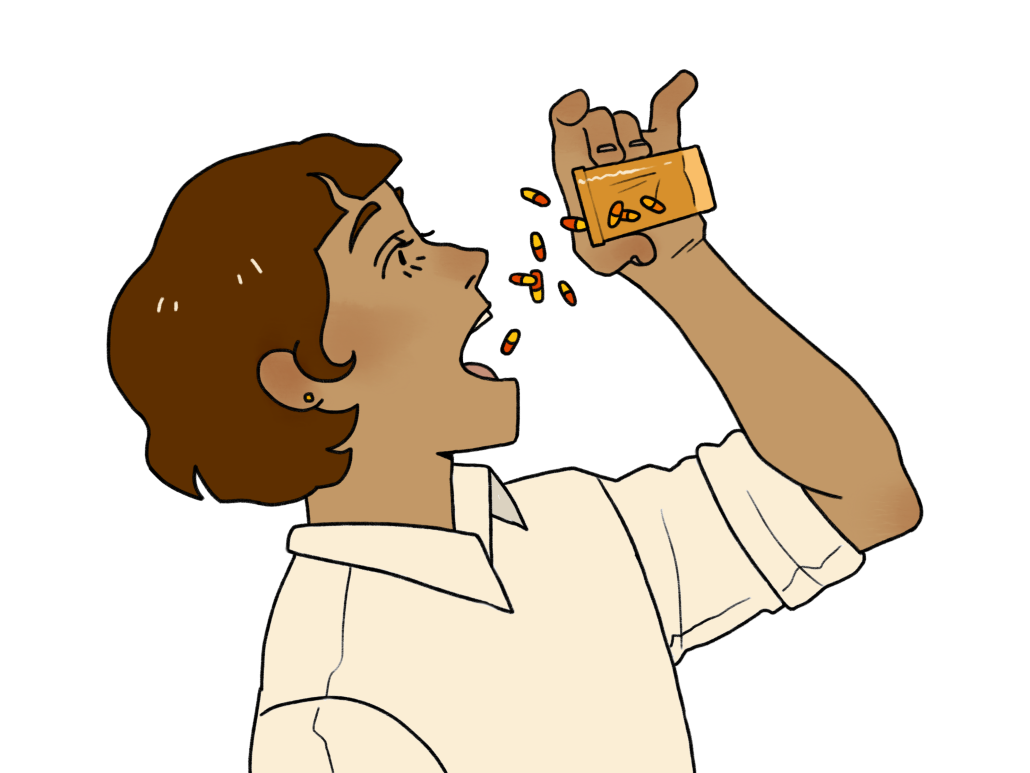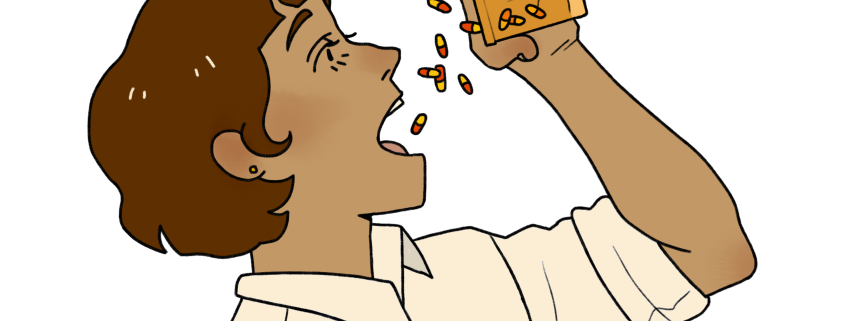Students need more than a quick fix pill

Today, the barrier that separates Americans and prescription medications is seemingly thinning. If there’s a pill to solve a problem, your doctor will most likely prescribe it for you to pick up easily. In many cases, patients aren’t as informed as they ought to be.
As of 2019, 15.8% of adults in the United States were taking some kind of prescription medication for their mental health. Among college students, this number is even higher — nearly a quarter are in some capacity dependent on an antidepressant, mood stabilizer or anti-anxiety medication. In addition, half of all college students describe their mental health as poor or below average. The number of young adults struggling with their mental health seems incredibly high, and is concerning, but is medication always the right or best first response?
In my own experience, I met with a psychiatrist at USC and was initially hesitant to go on medication. I wanted to explore what my options were to manage my anxiety. However, within twenty minutes, they were ready to prescribe me antidepressants to help manage my symptoms. My doctor briefly brushed over the explanation of the medication’s side effects, and while they did mention therapy as an option, it seemed like an afterthought. To me, the entire experience felt poorly handled. My own mental health struggles are complex, involving multiple diagnoses, and should require more than a quick debrief to determine if medication was a good fit.
It seemed almost too easy for me to obtain a prescription. This is not an isolated event.
A study conducted by the Department of Pharmacy Practice at Ferris State University found that 40.7% of people ages 2 to 24 prescribed psychotropics were also prescribed at least one other medication for another behavioral disorder. However, a review by the New York Times found that “more than 50 different psychotropic medicines [were] prescribed in such combinations, and … roughly half of the drugs were not approved for use in adolescents, although doctors have discretion to prescribe as they see fit.”
Adolescents receiving hasty diagnoses and prescription cocktails have negative consequences when taken too long — an increased risk of developing metabolic syndrome and developing diabetes or stroke is just a small example of what side -effects may arise. According to Banyan Mental Health, taking antidepressant medication when you don’t need it “can cause serotonin to build up in the body, resulting in serotonin syndrome” and lead to agitation and restlessness. This also doesn’t mention the fact that antidepressants can make symptoms worse.
Other treatments, such as talk therapy, could suit patients’ needs better but are often expensive and out of reach. Giving a patient a pill is a lot easier and cheaper than helping them navigate the healthcare system. Medication is an incredibly useful tool, but it’s important to remember that medication is not an all-in-one solution — it’s just one part of the entire toolbox — which is why therapy is essential to a patient’s treatment.
In a 2009 American Psychiatric Association meeting, economist Richard Frank acknowledged the progress the mental health field made, but criticized how medical practitioners are treating their patients stating, “There was no increase in the percentage of people treated by psychiatrists with psychotherapy. It’s all pharmacotherapy and very often pharmacotherapy alone … Quality of care is no longer increasing, and in some cases we may be giving up past gains.”
As of October 2022, the adderall shortage swept the nation and many blame this on the Drug Enforcement Administration cracking down on regulations while manufacturing the drug. While the cause for the shortage is contested, it raises the question of why there was such a drastic increase in demand. According to the Pre-Collegiate Global Health Review, ADHD is one of the most commonly misdiagnosed disorders worldwide. Yet, adderall continues to be prescribed without looking towards other possible diagnoses despite the highly addictive nature of the drug and with it being one of the most abused drugs in the U.S. in 2016.
Drugs have a lot of power, and both doctors and patients need to treat them like it. Prescription medication, even when taken safely, comes with both advantages and disadvantages. The best way to do that is to look at medication as just one piece of the puzzle. It is important to understand that medication is not an all-encompassing treatment. It might manage symptoms, but it might not reach the root of an issue.

